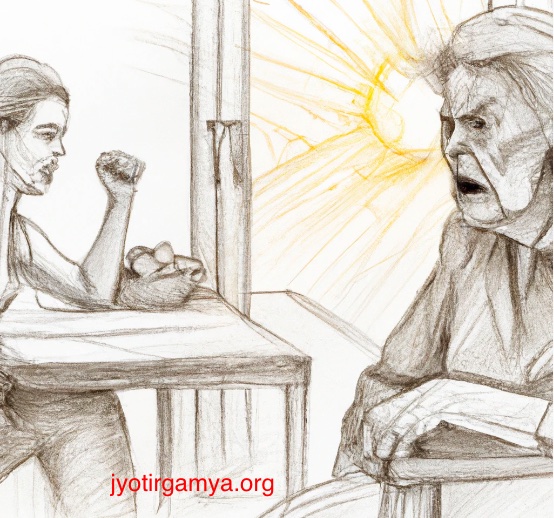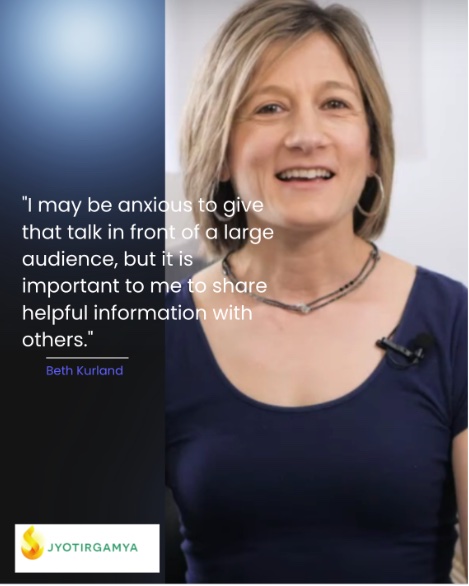Managing Anxiety: Strategies for Coping with the Different Aspects of Anxiety
Samantha had it all. A successful career, a loving husband, and a beautiful daughter. But people didn’t know Samantha had used unfair means to get where she was. She had cut corners and made enemies along the way. Her success came at a cost, and she soon realized it wasn’t worth it.
Her husband left her, unable to deal with the guilt and shame of her actions. Her daughter was distant and unable to trust anyone, including herself. Samantha was left alone with nothing but her thoughts and regrets. She spent her days repenting for her actions and worrying about her daughter’s future, who she felt was incapable of finding and sticking to a partner.
All of this was because of her ambition, which she never fulfilled, and now she was paying the price. In addition, her health was slowly deteriorating due to the stress of it all.
One fine morning, Samantha sat at the kitchen table, staring blankly into the morning sun. Her thoughts were filled with worry, just like every other day. Her daughter, Rachel, who was now in her 20s, had yet to settle down with a partner, and Samantha feared that she would never find love.
She had tried everything she could to help her daughter find a suitable partner, but nothing seemed to work. And now, to make matters worse, her daughter hated her for interfering in her life.
“I’m sorry for what I did, for the person I became,” said Samantha.
Her daughter looked at her with tears and replied, “I just want to be able to trust again, to have a real relationship.”
Samantha felt her heartbreak. She had never seen her daughter so vulnerable, so alone. It was then that she realised the extent of the damage she had caused, not just to herself but to those around her.
“You’re overprotective, Mom,” her daughter said, “I’m tired of it. I can take care of myself. I’m not a child anymore.”
Samantha sighed. “I just worry about you,” she said, “I don’t want anything to happen to you.”
“I know you do,” her daughter said, “but it’s not healthy. It’s ruining our relationship. I’m tired of feeling like I can never do anything right.”
“I wish I could help you, Mom. But you have to help yourself too. You can’t just keep worrying all the time,” Rachel said, concern etched on her face.
Samantha nodded, knowing that her daughter was right. She had to try and overcome her anxiety for her daughter’s sake and her own. She couldn’t live the rest of her life in fear and worry.
She sought help and learned about the different aspects of anxiety and how to manage it. She learned about breathing exercises, self-compassion, and focusing on values to improve her well-being. She also realised the importance of addressing anxiety holistically, not just in mind but in the body, emotions, and behaviour.

Introduction
Anxiety is a common experience that affects different aspects of our lives. It can appear in our bodies, minds, emotional experiences, and actions. Understanding the various facets of anxiety and developing strategies to address each is essential. In this article, the author shares her insights on managing anxiety and offers practical strategies to help readers cope with the various aspects of anxiety. The author suggests using mindful breathing, self-compassion, and focusing on values to manage anxiety and improve overall well-being.
We talked with author Beth Kurland and she shares her insights in the article below about anxiety.
When I think about managing anxiety, I find it helpful to consider strategies to address each of these four aspects of anxiety:
1. Anxiety in our bodies
When we are anxious, our nervous system responds to perceived threats that activate our stress response to try and protect us. Our heart rate increases, blood pressure increases, we feel a surge of energy as stress chemicals are released into our bloodstream, etc. Most of the time, these threats are not life-threatening, but our bodies can’t tell the difference between being chased by a saber tooth tiger (the kind of threat our Stone Age ancestors endured) and having to get up in front of a bunch of people to give a talk. Our stress response can go off just the same to try and protect us (even when there is no life-threatening emergency).
To deal with this, it is helpful to “feed” our nervous system cues of safety. This can come from slow, deep exhalations or mindful breathing. This sends alerts of protection up to the fear centres in our brains and helps put the brakes on our stress response. We might also use our imagination to think about something that makes us feel safe, such as being in a peaceful, beautiful place or surrounded by those we love. Music, gentle movement, or soothing our senses (a weighted blanket or a warm bath) can also be helpful. Focusing on any one or more of our five senses and engaging those senses (what is something you can see, something you can hear, something you can touch) can help to calm the nervous system. Each person can experiment and find what is personally helpful for them.
2. Anxiety in our minds
Often our minds can race off into the future, jumping to “what if” thoughts and worst-case scenarios. This mental rumination pulls us away from the present moment, from what is here right now, and can make whatever is happening to feel much worse.
While working with the anxious mind, it can be helpful to ask, “What is here right now? And “how can I be with what is here?” It is much easier to cope with this moment than this moment, plus everything else that might go wrong. When we can identify what is here right now, we can then see if there is anything in our sphere of influence and any action steps we can take to address the situation. Even small actions that give us a sense of personal agency can be helpful (e.g., advocating for yourself and ensuring your doctor handles all your questions if you are dealing with a difficult diagnosis).
3. Anxiety as an emotional experience
When we experience anxiety, we often try to push it away because it’s uncomfortable. But it can be helpful to treat anxiety like a small child. We wouldn’t drive a small child away who was anxious. Instead, we might pick them up, soothe and comfort them, and try to help them feel more at ease. When we practice treating ourselves like this and relieving ourselves with self-compassion, it can help bring relief to whatever we are experiencing.
4. Anxiety that affects our actions
Often, anxiety can prevent us from doing things that are important to us. For example, we might start avoiding situations or saying no to things we want to do because we are afraid we will feel anxious. If this occurs, our world can begin becoming smaller.
Focusing on what is important to you about the situation and why it is essential can be helpful. For example, I may be anxious to give that talk in front of a large audience, but it is important to me to share helpful information with others. Then, take small steps to help build your confidence (e.g., I might practice talking in front of my family first, then friends, etc.). Also, practice acceptance and commitment — accept that you feel a little anxious, but be committed to doing this anyway because it is important to you and is connected to something you value.
Conclusion
In conclusion, anxiety management requires a holistic approach that addresses all aspects of anxiety, including physical, mental, emotional, and behavioural. By incorporating various techniques, such as breathing exercises, self-compassion, and focusing on values, individuals can learn to manage anxiety and improve their quality of life. It is important to remember that everyone’s experience with anxiety is unique, and it may take time to find what works best for each individual.

About the Author :
Dr Beth Kurland is a licensed clinical psychologist, author, TEDx speaker, and public speaker with over two decades of experience in mental health and wellness. With a strong interest in mindfulness, meditation, and mind-body practices, Dr Kurland believes in using integrative approaches to help people transform their lives and experience greater well-being and wholeness. She is the award-winning author of three books, the latest one being: “Dancing on the Tightrope: Transcending the Habits of Your Mind and Awakening to Your Fullest Life.”
Throughout her career, Dr Kurland has worked with individuals, families, and groups of all ages to treat various mental health issues. She has also conducted therapy and assessments in a psychiatric hospital. She uses a strength-based model incorporating mindfulness, cognitive-behavioural therapy, positive psychology, and other evidence-based approaches.
Dr Kurland offers free audio and video meditations on her website, BethKurland.com, and her work can also be found on Insight Timer and Zen Mixer.
Related Articles
That’s all in this edition.
If you liked reading the article, do share it with folks who would benefit from it.
Want to stay connected? Here’s our twitter.
Or subscribe to our monthly newsletter containing tools for body, mind, and goal.